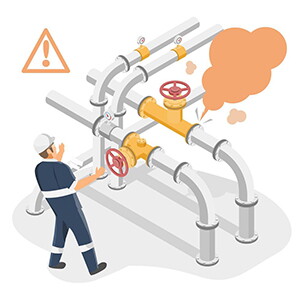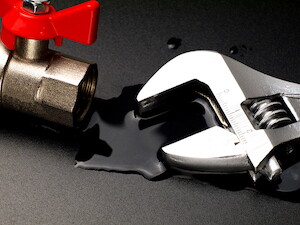Solutions and Preventive Measures for Managing Valve Leakage
Mar 06, 2024
Valves play a crucial role in industrial production and pipeline systems. However, over time, they may encounter issues such as valve leakage or improper sealing. This article aims to delve into the problem of valve leakage, providing comprehensive analysis, effective solutions, and maintenance recommendations to ensure the smooth operation and safety of industrial valves.
1. Problem Analysis
Valve leakage can stem from various reasons, including impurities obstructing the valve sealing surface, rusting of valve stem threads, damage to the valve sealing surface, and poor connection between the valve stem and the valve disc. Different causes require corresponding solutions.

2. Solutions to Valve Leakage Issues
Addressing valve leakage issues requires a systematic approach and may involve different solutions depending on the specific circumstances. Here are some common solutions to valve leakage issues.

Valve Sealing Surface Cleaning
When encountering valve leakage, the first step is to check for impurities on the sealing surface. If present, appropriate cleaning agents should be used to thoroughly clean the sealing surface. For stubborn impurities, ultrasonic cleaning technology can be considered to ensure a smooth and uncontaminated sealing surface.
Treatment of Valve Stem Threads
If valve stem thread rusting causes leakage, lubricants or rust inhibitors can be applied. While applying lubricants, the valve should be repeatedly opened and closed to facilitate the penetration of lubricants into the threads, restoring the valve's normal operation. If the threads are severely damaged, repair or replacement is necessary.
Sealing Surface Repair
Damaged valve sealing surfaces require professional repair. Grinding, polishing, or replacement of the sealing surface can be performed to ensure integrity and prevent media leakage. Post-repair, seal performance testing should be conducted to ensure compliance with standards.
Adjusting Valve Stem and Valve Disc Connection
Poor connection between the valve stem and the valve disc, resulting in disc misalignment with the valve seat, can be rectified by adjusting the valve stem position or replacing connecting components. Ensuring tight contact between the valve disc and the valve seat improves valve sealing performance.
When encountering valve leakage, the first step is to check for impurities on the sealing surface. If present, appropriate cleaning agents should be used to thoroughly clean the sealing surface. For stubborn impurities, ultrasonic cleaning technology can be considered to ensure a smooth and uncontaminated sealing surface.
Treatment of Valve Stem Threads
If valve stem thread rusting causes leakage, lubricants or rust inhibitors can be applied. While applying lubricants, the valve should be repeatedly opened and closed to facilitate the penetration of lubricants into the threads, restoring the valve's normal operation. If the threads are severely damaged, repair or replacement is necessary.
Sealing Surface Repair
Damaged valve sealing surfaces require professional repair. Grinding, polishing, or replacement of the sealing surface can be performed to ensure integrity and prevent media leakage. Post-repair, seal performance testing should be conducted to ensure compliance with standards.
Adjusting Valve Stem and Valve Disc Connection
Poor connection between the valve stem and the valve disc, resulting in disc misalignment with the valve seat, can be rectified by adjusting the valve stem position or replacing connecting components. Ensuring tight contact between the valve disc and the valve seat improves valve sealing performance.
3. Maintenance Suggestions
Preventive maintenance is key to avoiding valve leakage issues. Here are some suggestions for maintaining valves to prevent leaks
Regular Valve Inspection
Regular inspection of valve operation, including sealing surfaces, valve stem threads, and connections, is recommended to promptly identify and address issues. Scheduled maintenance, including lubrication, cleaning, and tightening, should be carried out.
Proper Lubricant Usage
Regular lubrication of valve stems and nuts with suitable lubricants ensures valve flexibility and smooth operation. Lubricant selection should consider media requirements to prevent contamination or damage.
Attention to Media Quality
Maintaining the cleanliness of media prevents impurities from entering valve sealing surfaces, reducing the occurrence of valve failures. If the media is corrosive or contains particulate matter, appropriate protective measures such as filters or corrosion-resistant coatings should be employed.
Regular inspection of valve operation, including sealing surfaces, valve stem threads, and connections, is recommended to promptly identify and address issues. Scheduled maintenance, including lubrication, cleaning, and tightening, should be carried out.
Proper Lubricant Usage
Regular lubrication of valve stems and nuts with suitable lubricants ensures valve flexibility and smooth operation. Lubricant selection should consider media requirements to prevent contamination or damage.
Attention to Media Quality
Maintaining the cleanliness of media prevents impurities from entering valve sealing surfaces, reducing the occurrence of valve failures. If the media is corrosive or contains particulate matter, appropriate protective measures such as filters or corrosion-resistant coatings should be employed.
By implementing the above analysis, solutions, and maintenance practices, valve leakage issues can be effectively addressed. Proper valve maintenance is essential for prolonging valve lifespan, enhancing system safety, and ensuring uninterrupted production operations. Valves are critical components in pipeline systems, and addressing valve issues promptly is paramount to maintaining system integrity and operational efficiency.
Next: Fully Welded Ball Valve: Characteristics and Applications
Previous: The Significance of Angle Globe Valves in Industrial Processes
About Us
Categories
Useful Links
Our Contacts
Building 2, NO.59, Songshan Road, SND, Suzhou, China
